The United States-Mexico-Canada Agreement and Impacts for U.S. Agriculture
 AI Summary
AI Summary
Key Insights
- The USMCA consolidates the gains of NAFTA 1.0 with modest improvements in market access.
- Farmers are facing strong headwinds as U.S. trading partners react to rising U.S. tariffs.
- Dissolution of NAFTA could be costly for U.S. agricultural interests.
- Significant decline in agricultural export revenue, total decline of $8 billion.
- Full impact of current U.S. actions and retaliatory measures.
Loading...
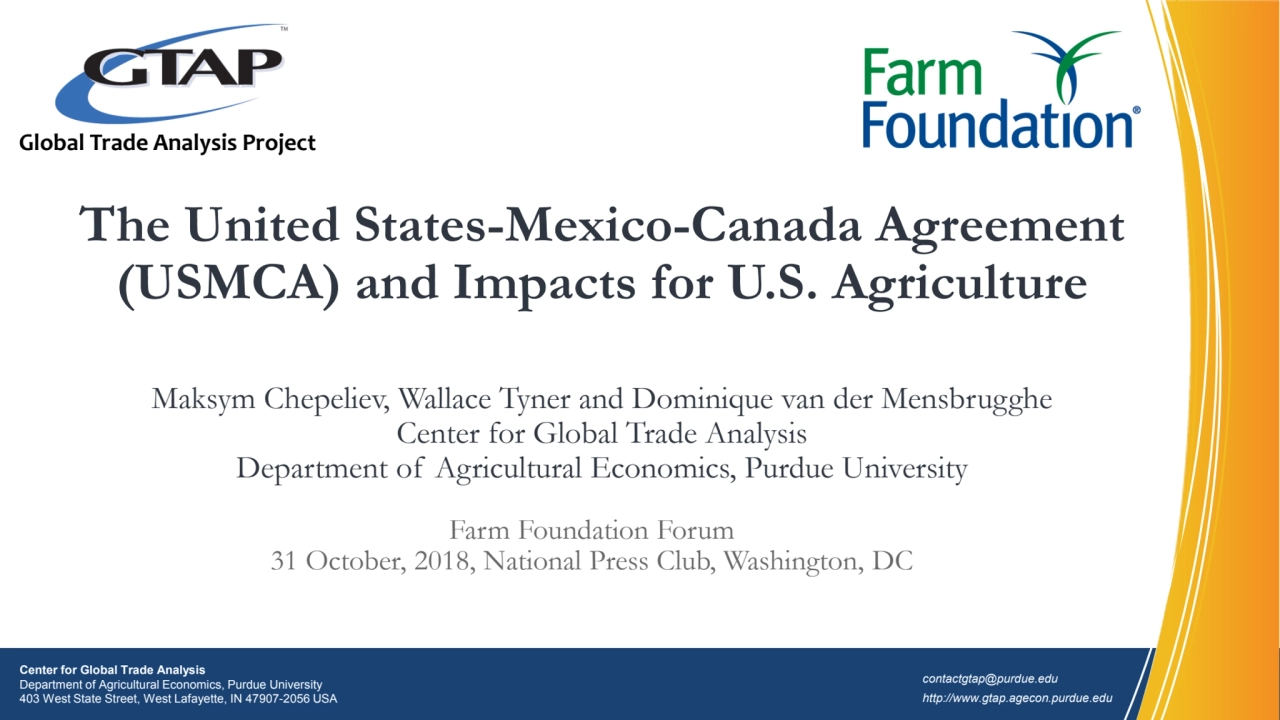
Loading...
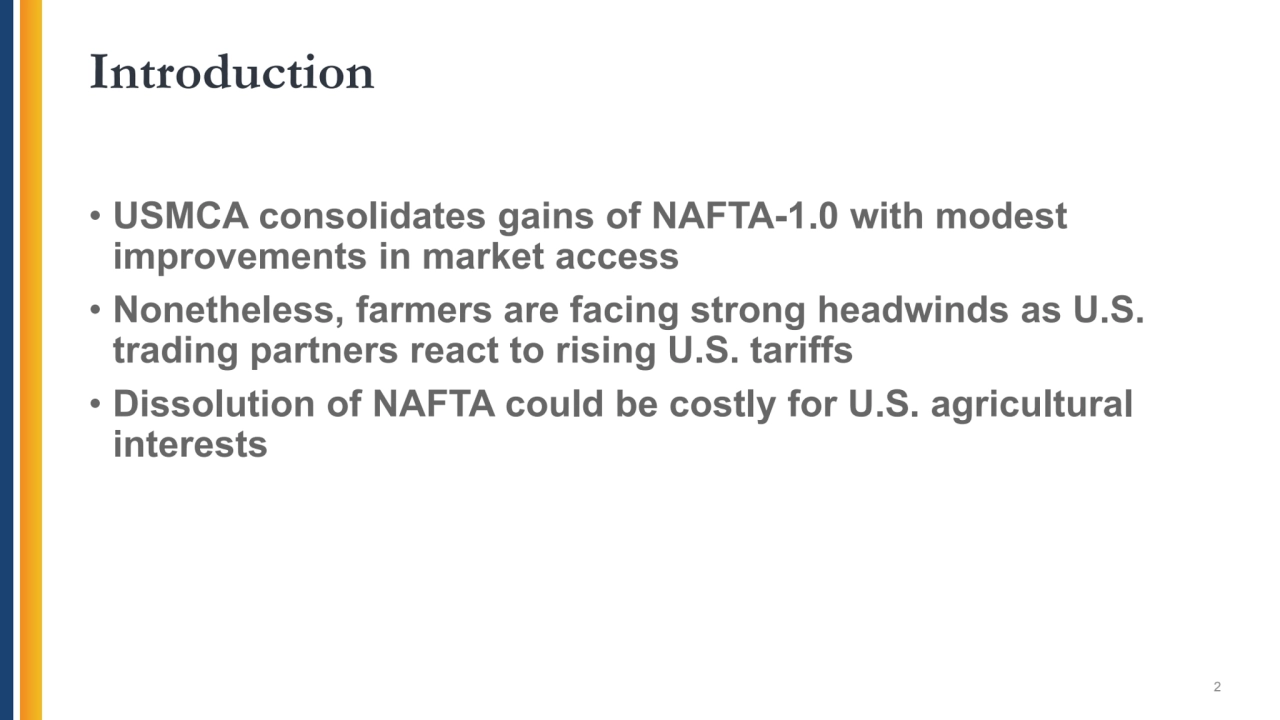
Loading...

Loading...
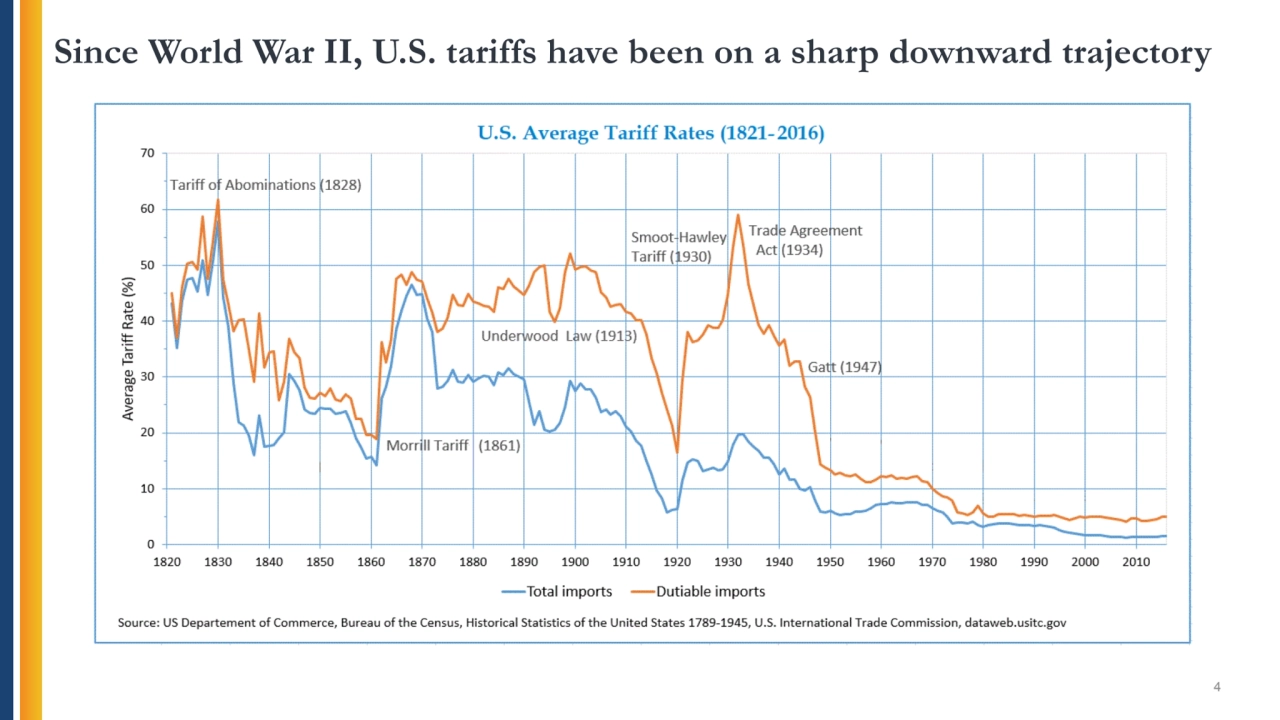
Loading...
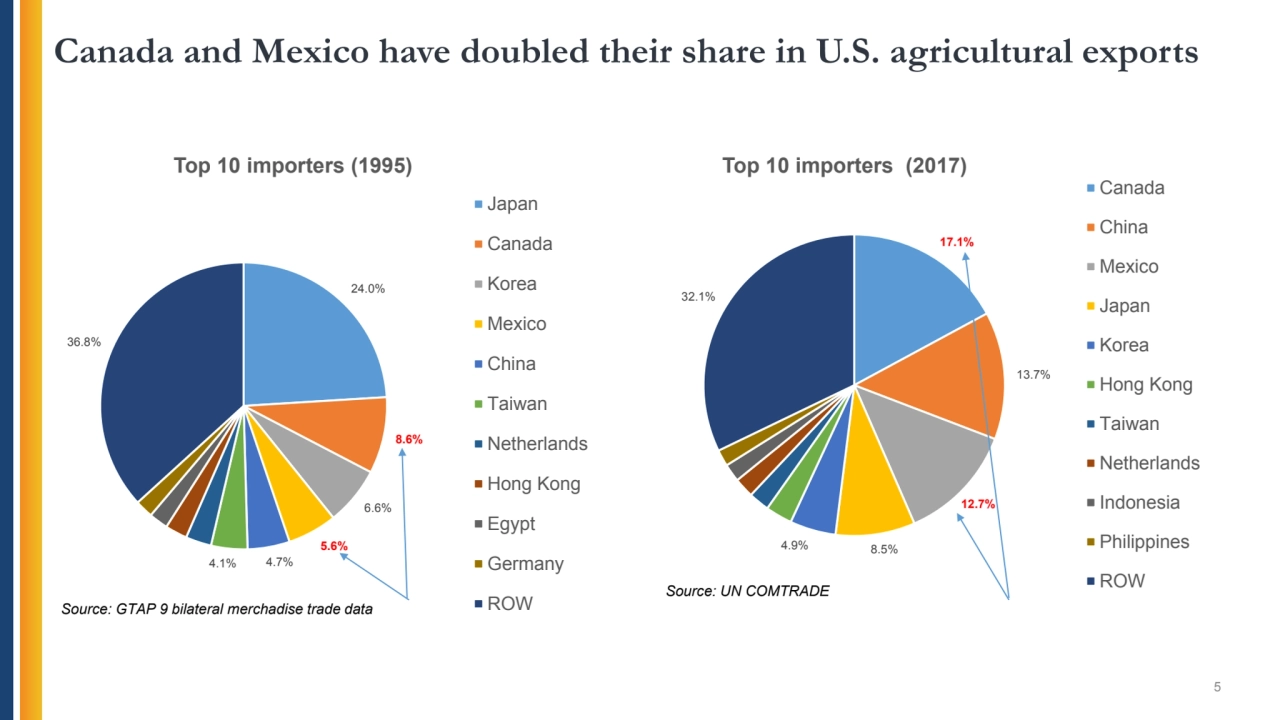
Loading...
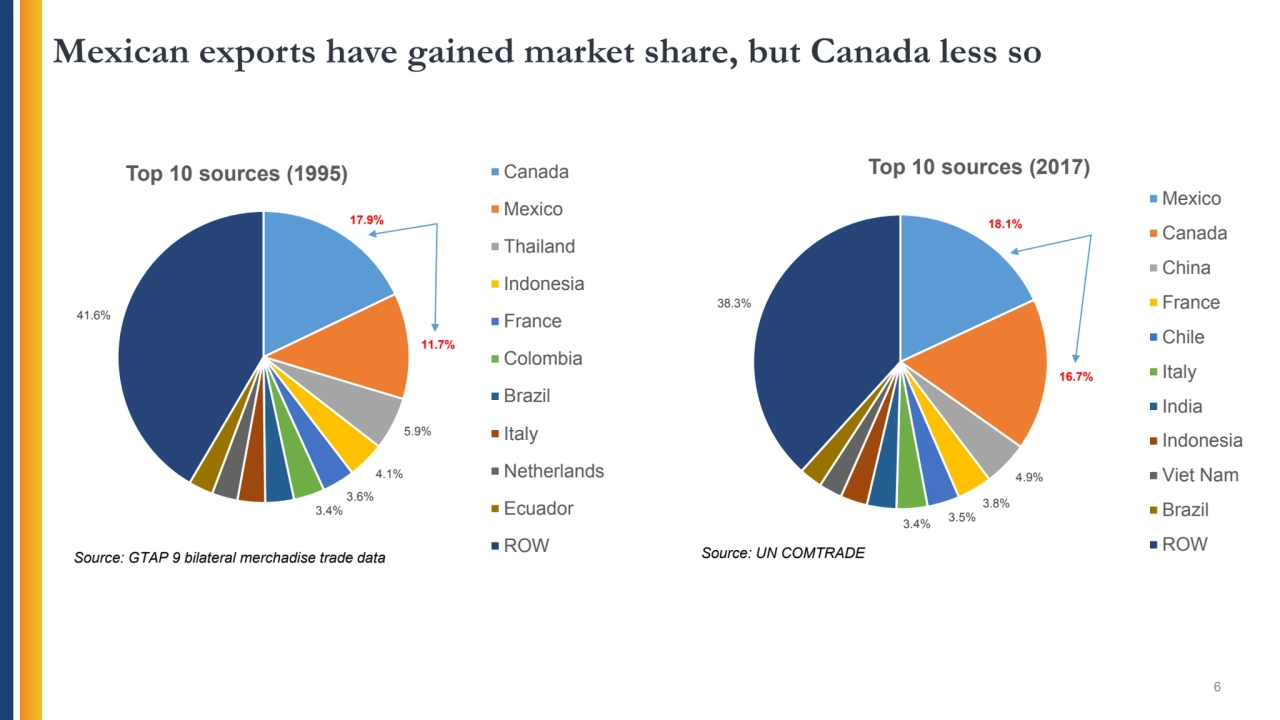
Loading...
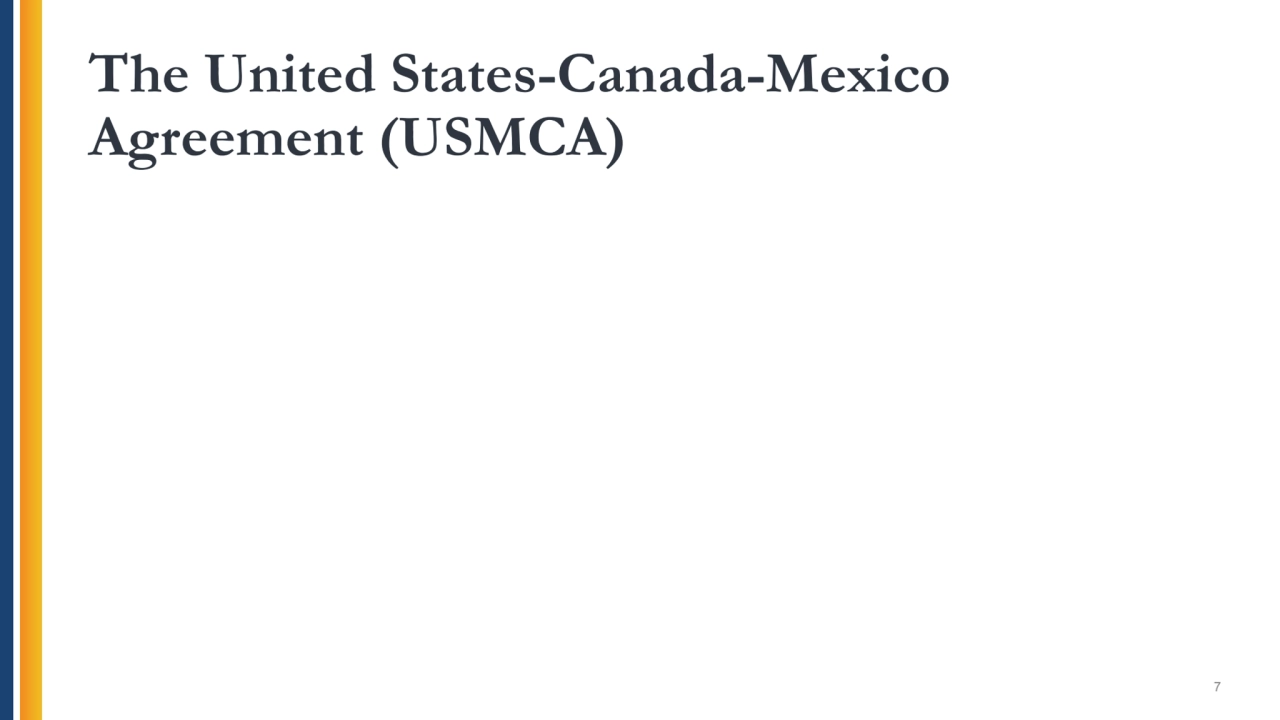
Loading...
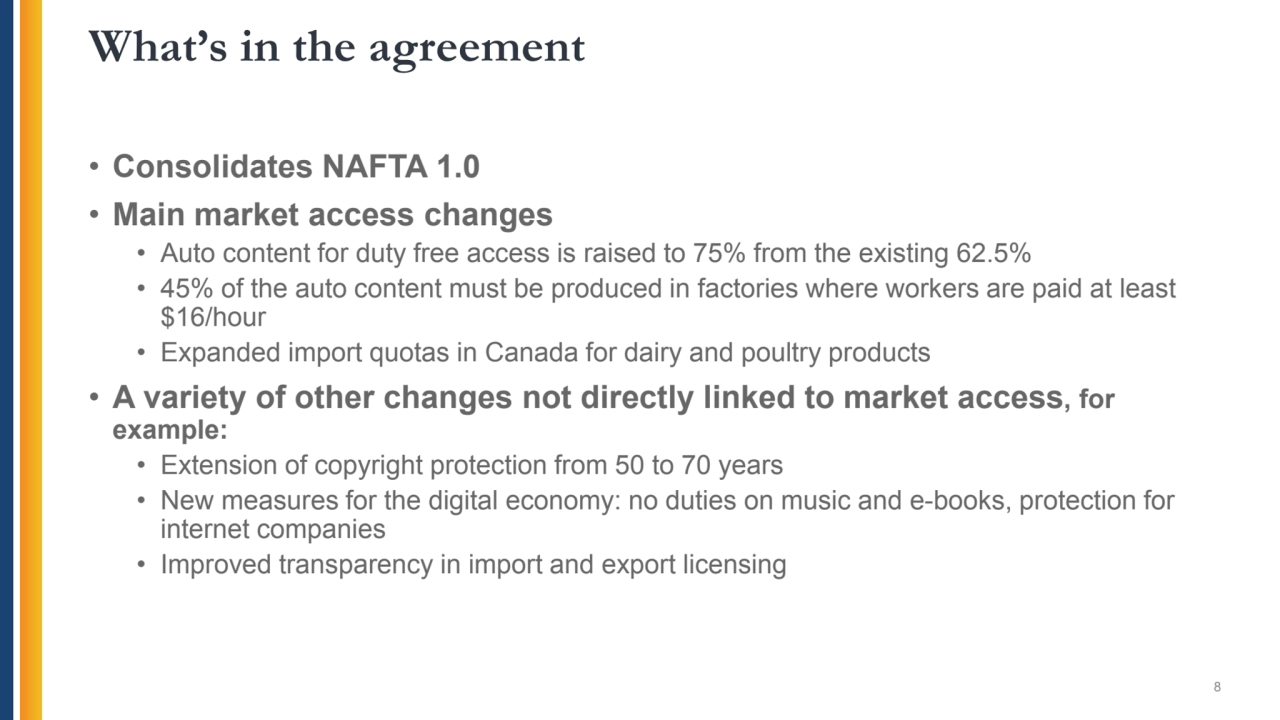
Loading...

Loading...
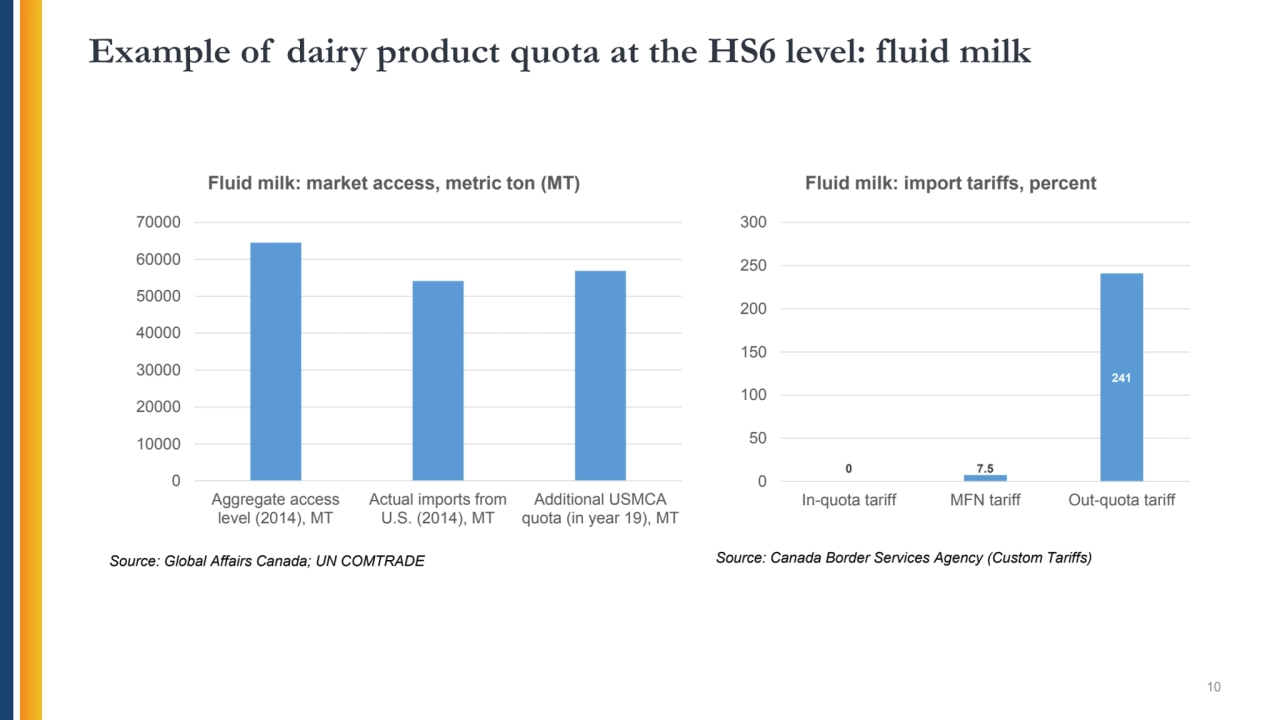
Loading...
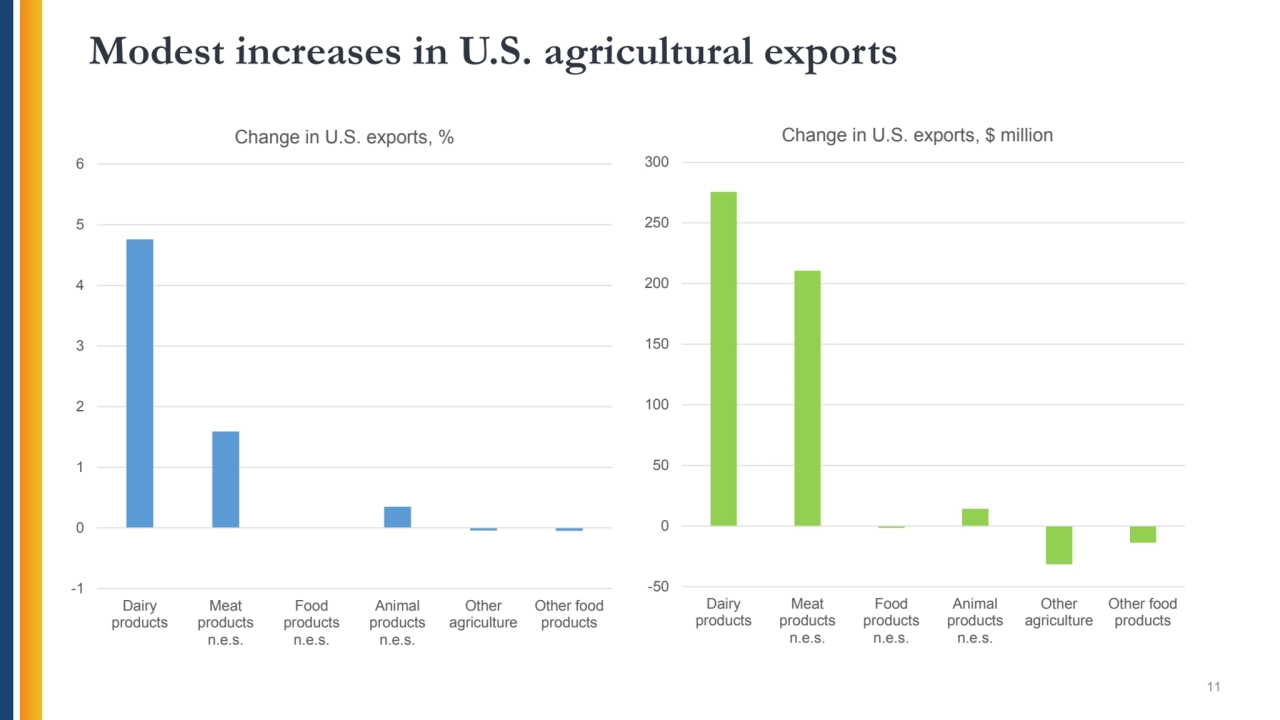
Loading...
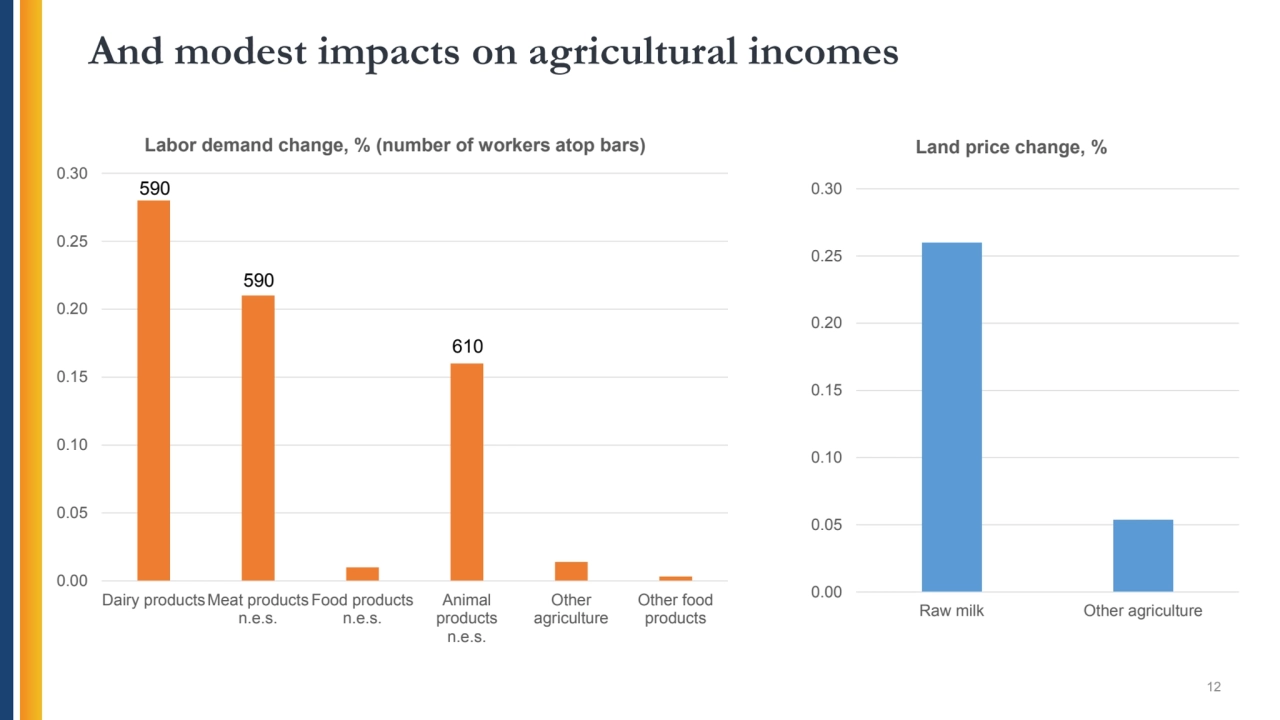
Loading...
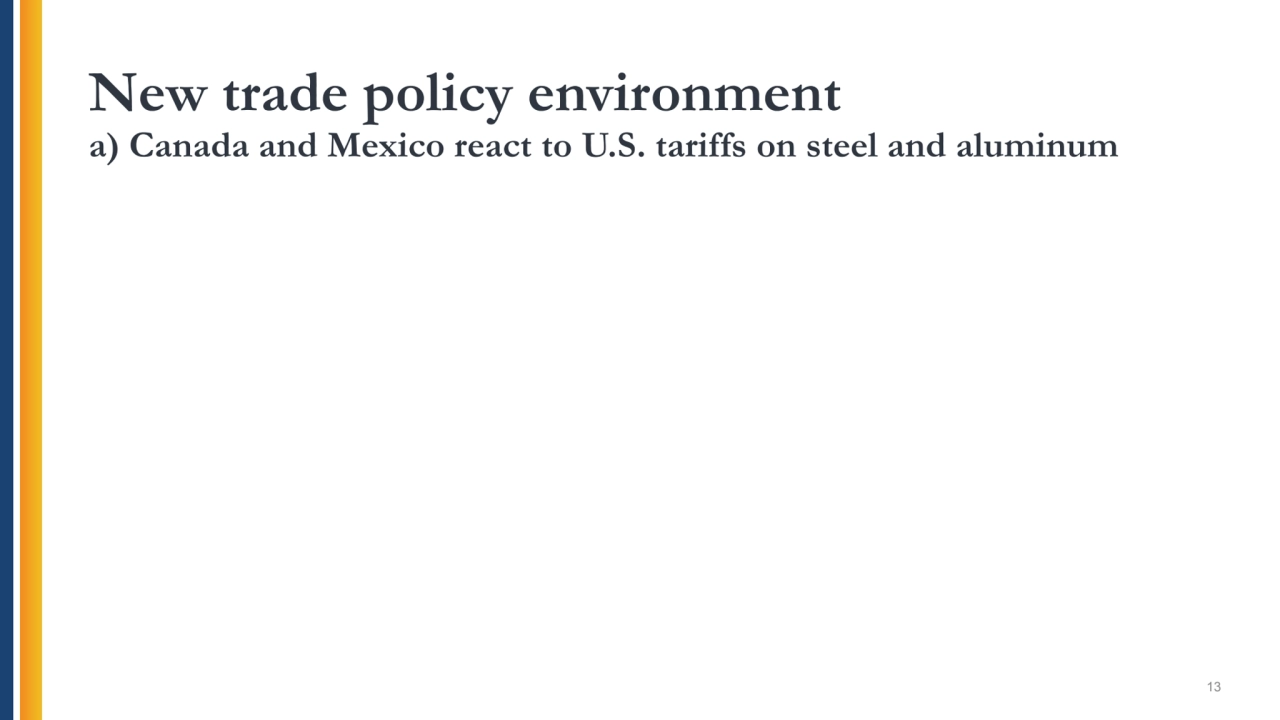
Loading...
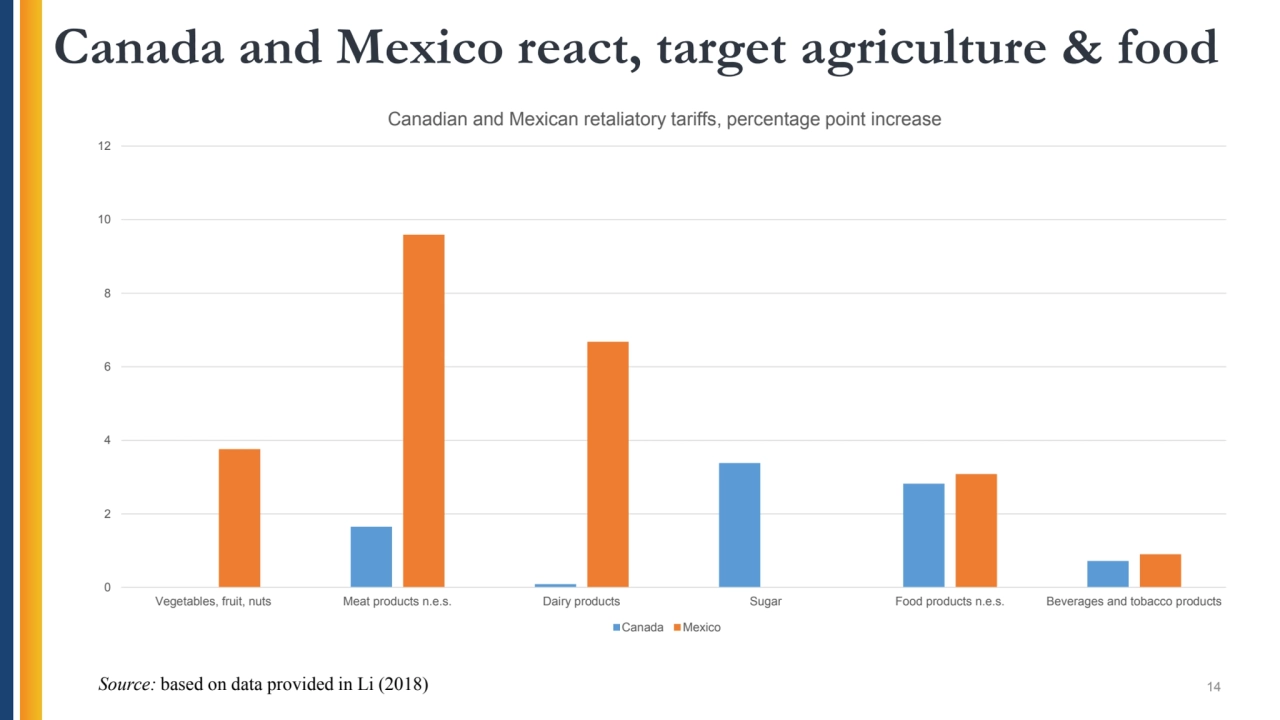
Loading...
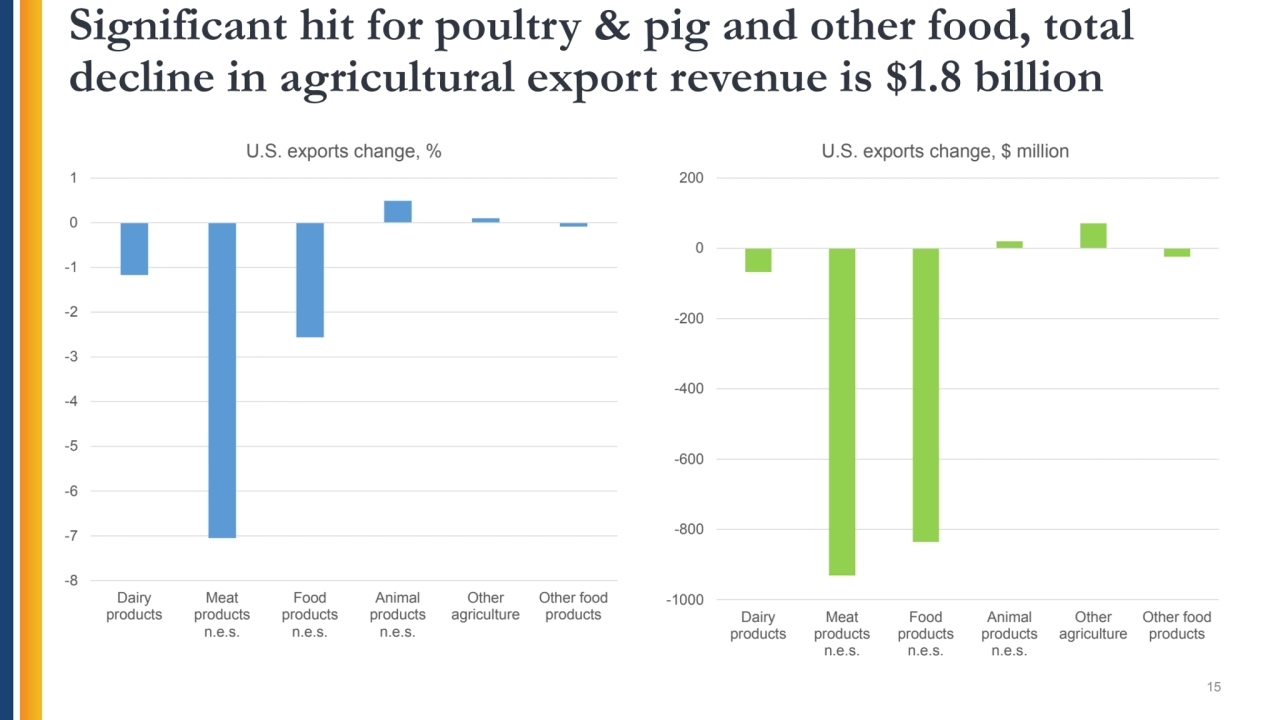
Loading...
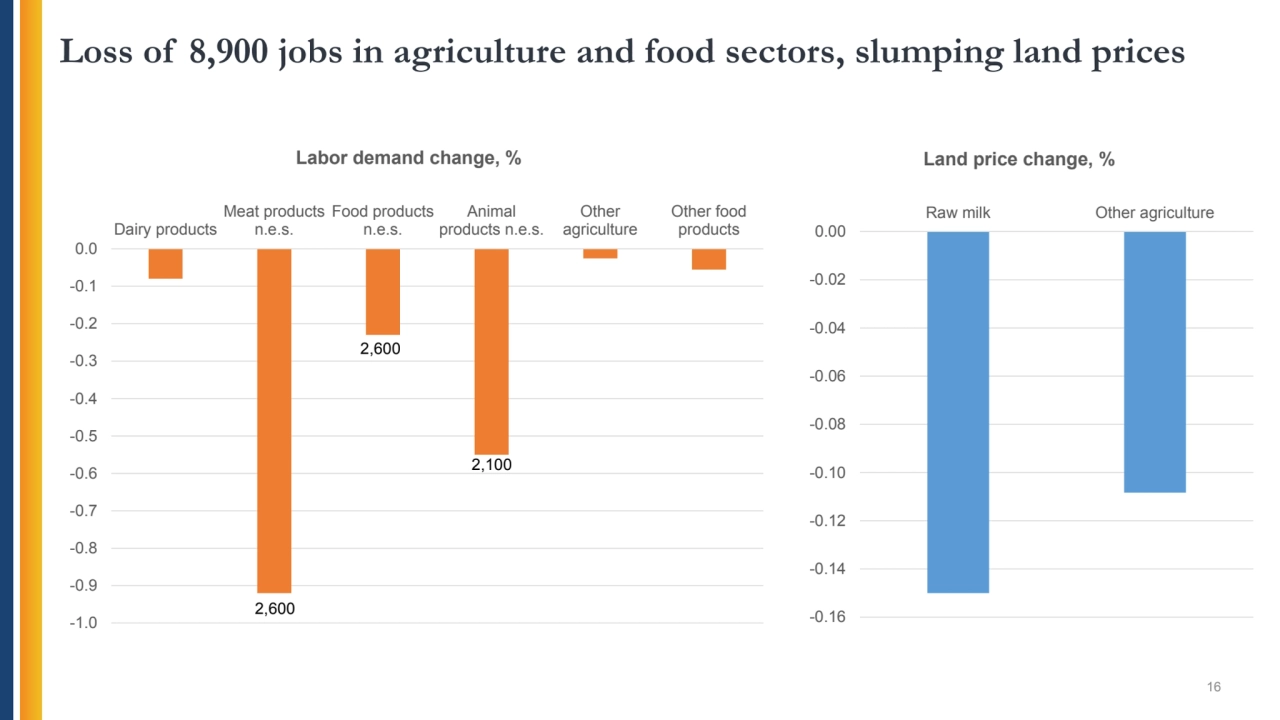
Loading...
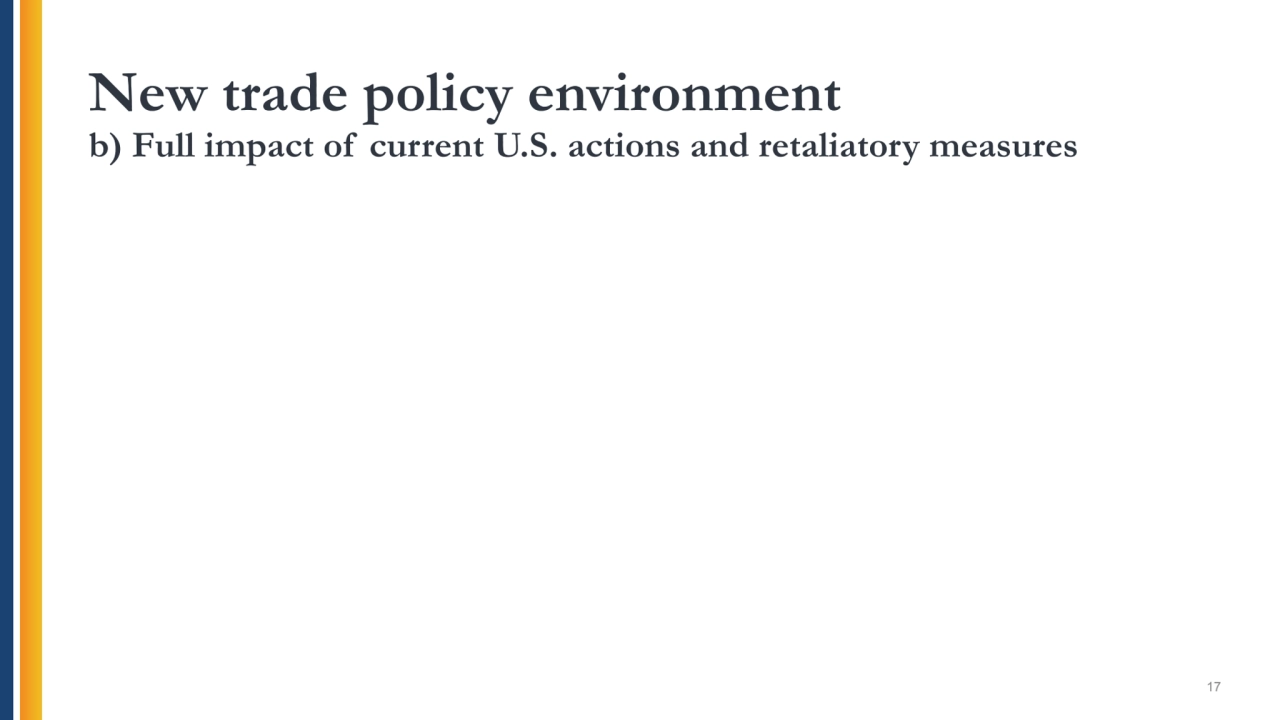
Loading...
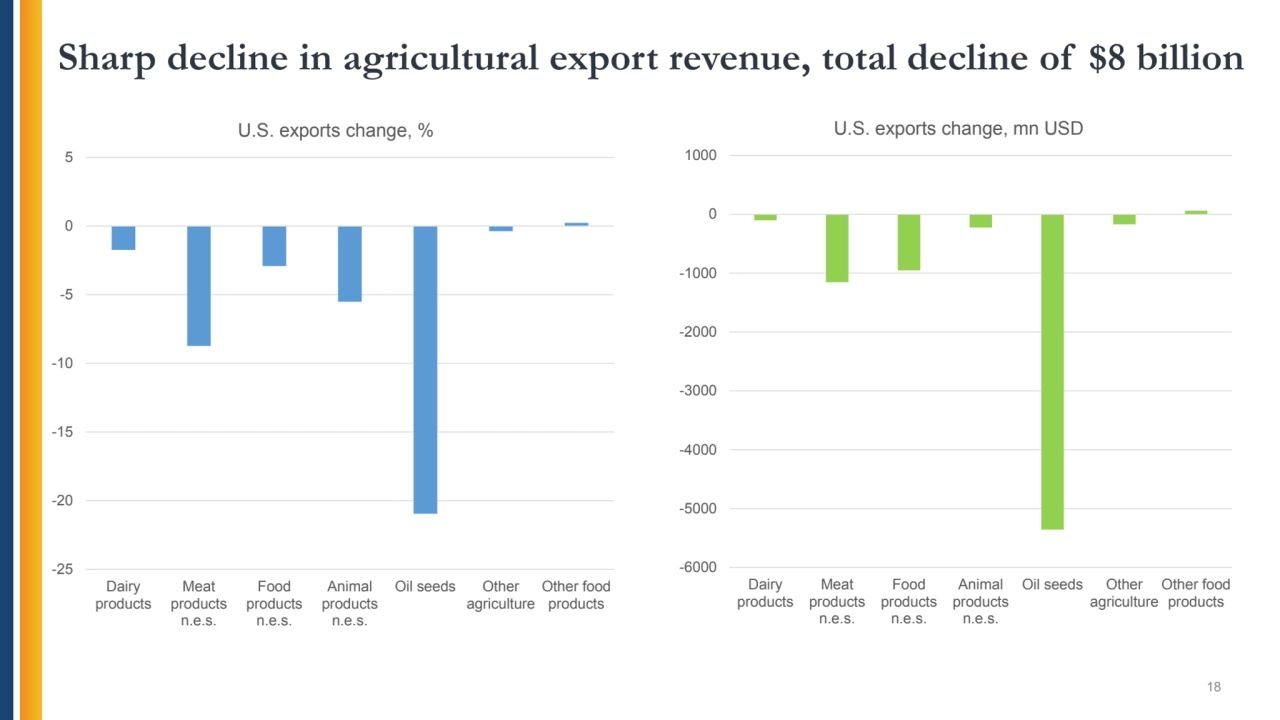
Loading...
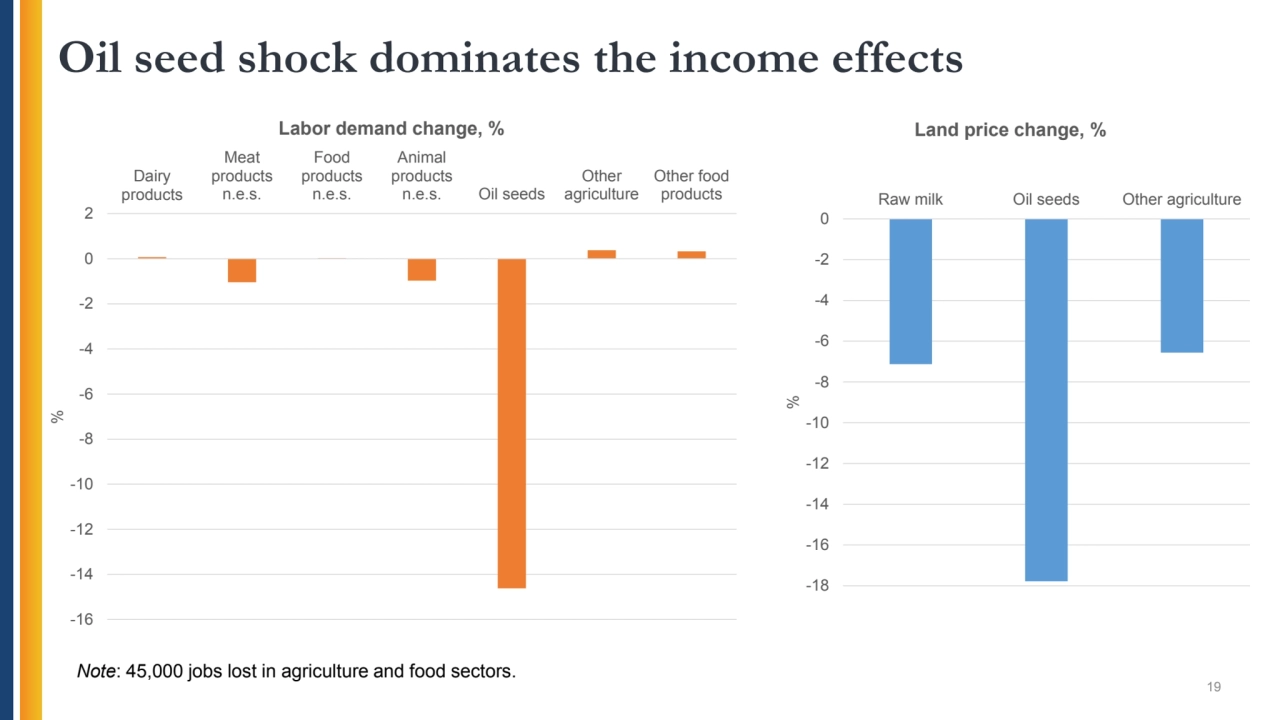
Loading...
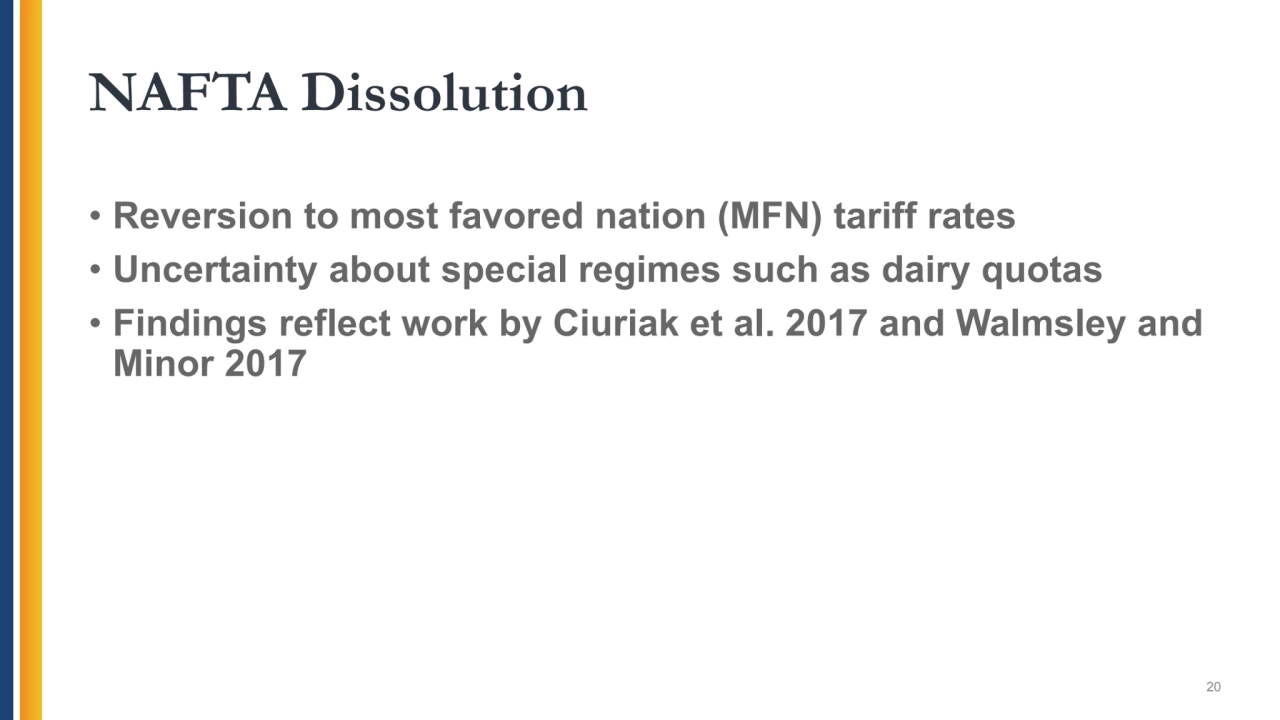
Loading...
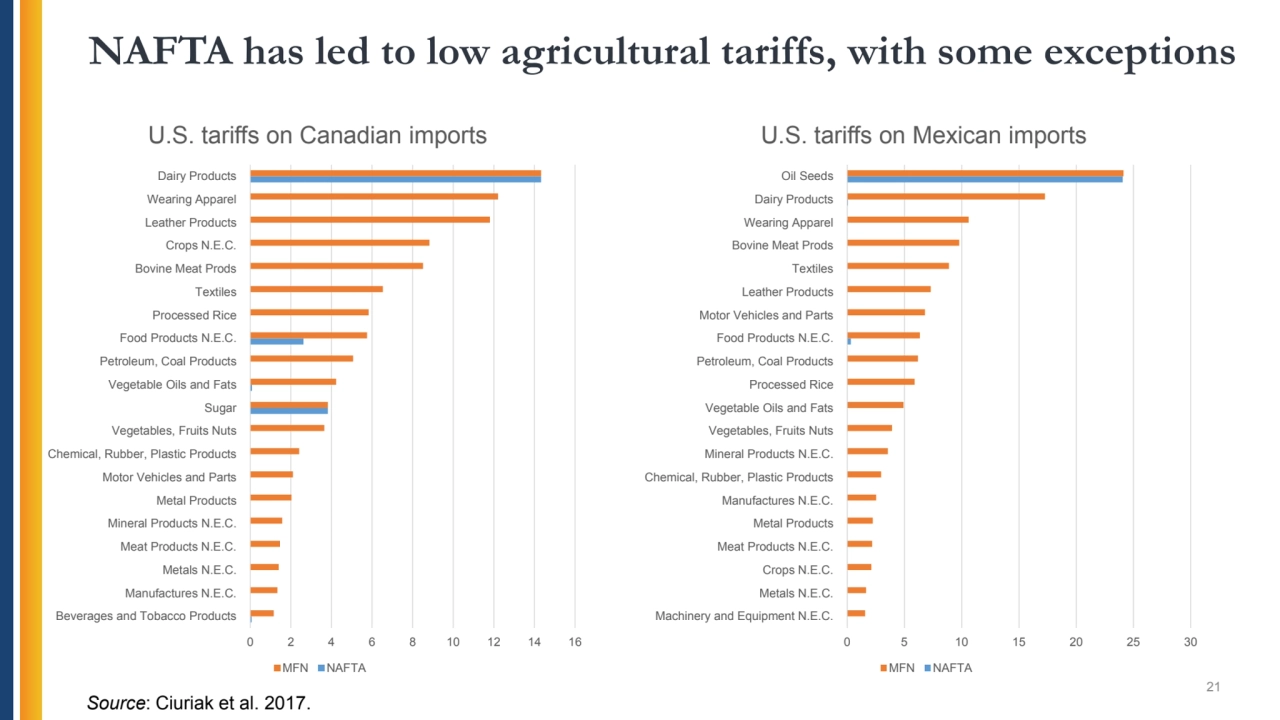
Loading...
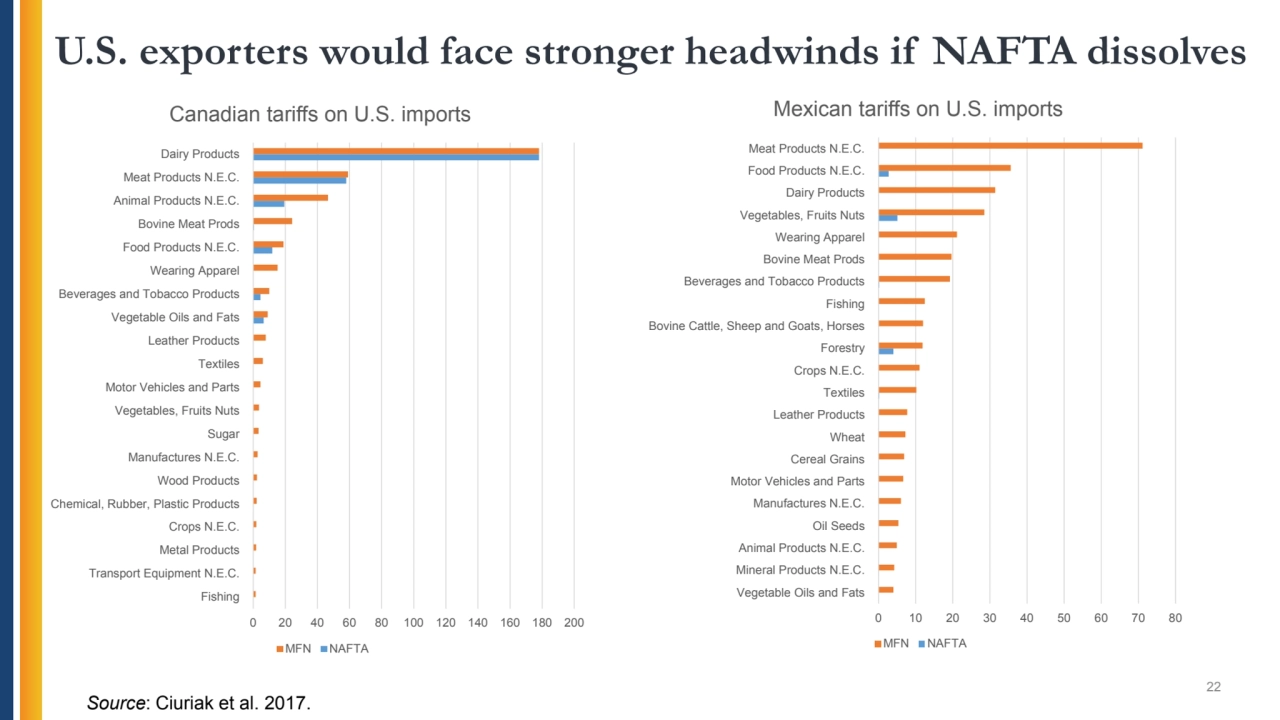
Loading...
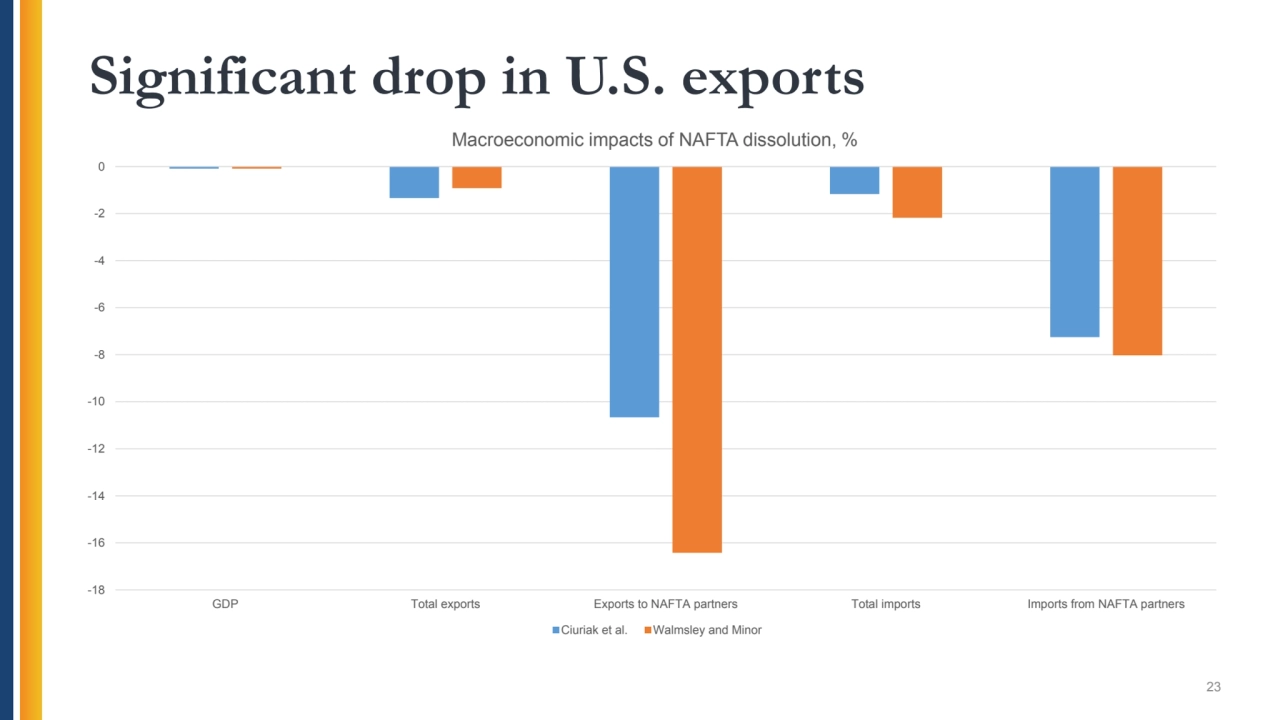
Loading...
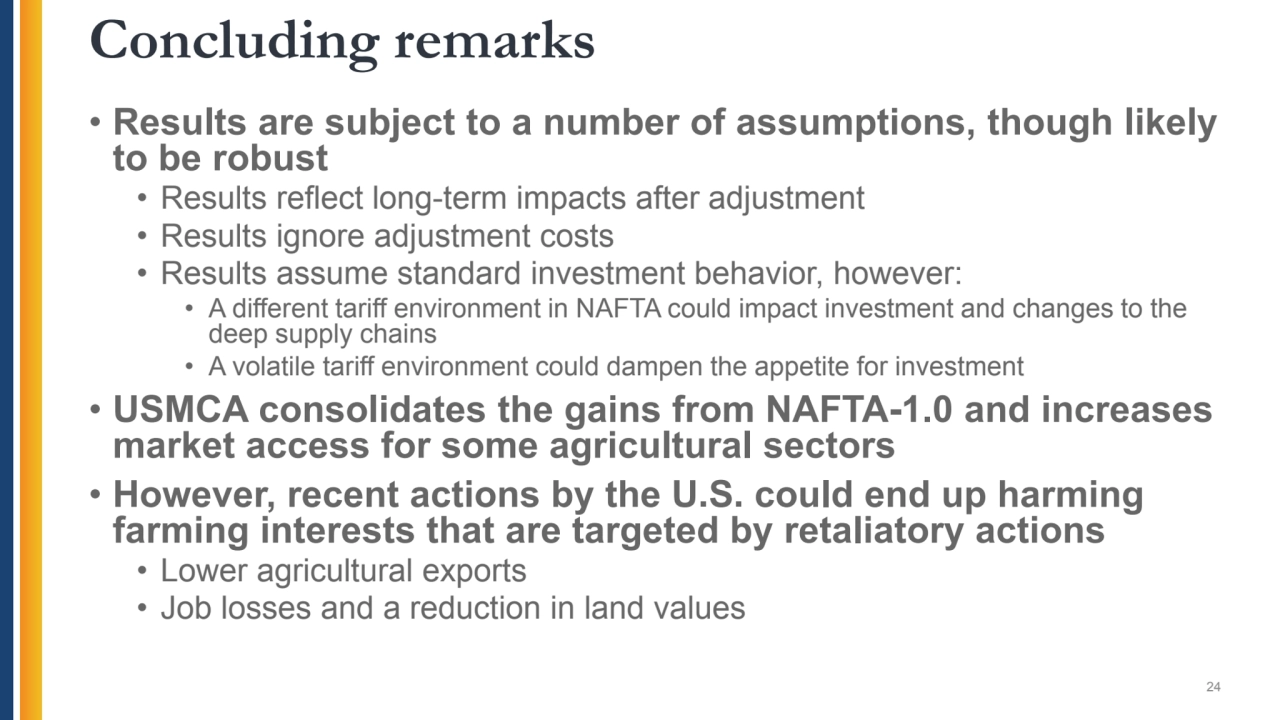
Loading...
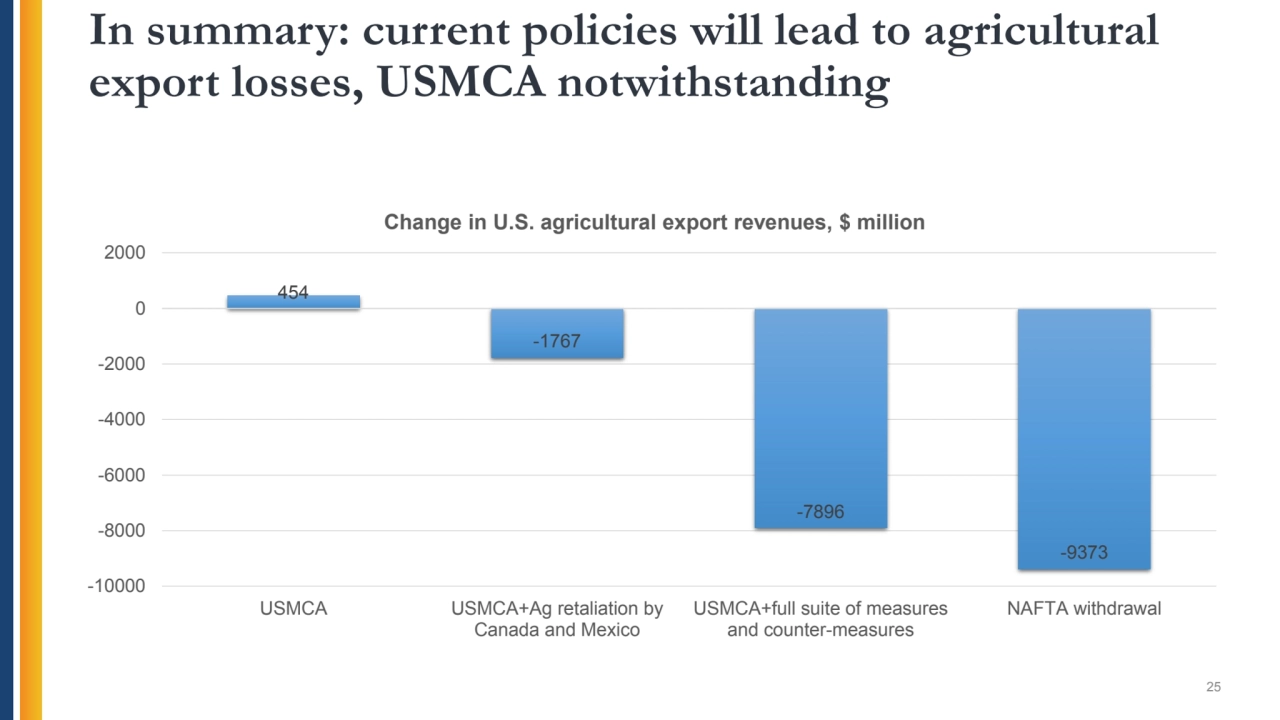
Loading...
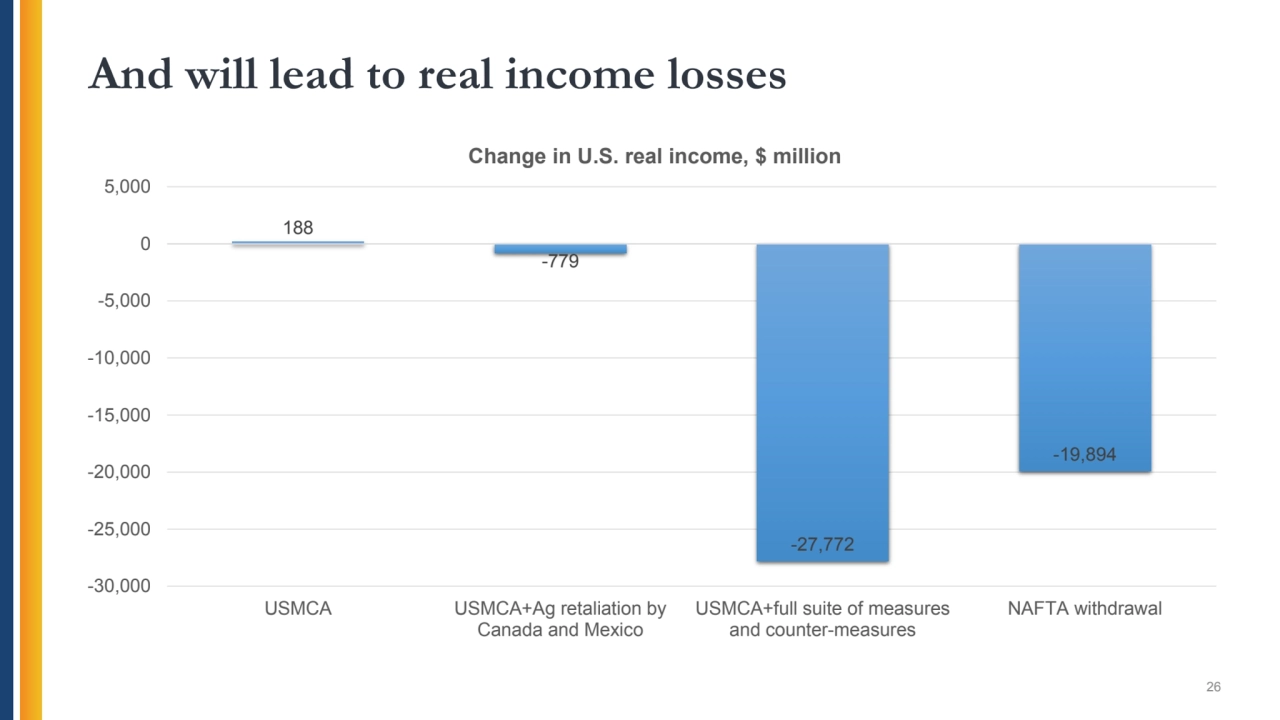
Loading...

The United States-Mexico-Canada Agreement and Impacts for U.S. Agriculture
- 1. Center for Global Trade Analysis Department of Agricultural Economics, Purdue University 403 West State Street, West Lafayette, IN 47907-2056 USA contactgtap@purdue.edu http://www.gtap.agecon.purdue.edu Global Trade Analysis Project The United States-Mexico-Canada Agreement (USMCA) and Impacts for U.S. Agriculture Maksym Chepeliev, Wallace Tyner and Dominique van der Mensbrugghe Center for Global Trade Analysis Department of Agricultural Economics, Purdue University Farm Foundation Forum 31 October, 2018, National Press Club, Washington, DC
- 2. • USMCA consolidates gains of NAFTA-1.0 with modest improvements in market access • Nonetheless, farmers are facing strong headwinds as U.S. trading partners react to rising U.S. tariffs • Dissolution of NAFTA could be costly for U.S. agricultural interests Introduction 2
- 3. An Historical Perspective 3
- 4. Since World War II, U.S. tariffs have been on a sharp downward trajectory 4
- 5. Canada and Mexico have doubled their share in U.S. agricultural exports 5 24.0% 8.6% 6.6% 5.6% 4.1% 4.7% 36.8% Top 10 importers (1995) Japan Canada Korea Mexico China Taiwan Netherlands Hong Kong Egypt Germany Source: GTAP 9 bilateral merchadise trade data ROW 17.1% 13.7% 12.7% 4.9% 8.5% 32.1% Top 10 importers (2017) Canada China Mexico Japan Korea Hong Kong Taiwan Netherlands Indonesia Philippines Source: UN COMTRADE ROW
- 6. Mexican exports have gained market share, but Canada less so 6 17.9% 11.7% 5.9% 4.1% 3.6% 3.4% 41.6% Top 10 sources (1995) Canada Mexico Thailand Indonesia France Colombia Brazil Italy Netherlands Ecuador ROW Source: GTAP 9 bilateral merchadise trade data 18.1% 16.7% 4.9% 3.8% 3.5% 3.4% 38.3% Top 10 sources (2017) Mexico Canada China France Chile Italy India Indonesia Viet Nam Brazil Source: UN COMTRADE ROW
- 7. The United States-Canada-Mexico Agreement (USMCA) 7
- 8. • Consolidates NAFTA 1.0 • Main market access changes • Auto content for duty free access is raised to 75% from the existing 62.5% • 45% of the auto content must be produced in factories where workers are paid at least $16/hour • Expanded import quotas in Canada for dairy and poultry products • A variety of other changes not directly linked to market access, for example: • Extension of copyright protection from 50 to 70 years • New measures for the digital economy: no duties on music and e-books, protection for internet companies • Improved transparency in import and export licensing What’s in the agreement 8
- 9. 105.59 2.69 11.5 0.04 0 20 40 60 80 100 120 Dairy products Live poultry and pigs, eggs Poultry and pork meat Other food products New market access measures in agriculture, estimated changes in quotas, percent 9 Source: authors’ estimates based on USTA (2018a; 2018b)
- 10. Example of dairy product quota at the HS6 level: fluid milk 10 0 10000 20000 30000 40000 50000 60000 70000 Aggregate access level (2014), MT Actual imports from U.S. (2014), MT Additional USMCA quota (in year 19), MT Fluid milk: market access, metric ton (MT) Source: Global Affairs Canada; UN COMTRADE 0 7.5 241 0 50 100 150 200 250 300 In-quota tariff MFN tariff Out-quota tariff Fluid milk: import tariffs, percent Source: Canada Border Services Agency (Custom Tariffs)
- 11. Modest increases in U.S. agricultural exports 11 Dairy products Meat products n.e.s. Food products n.e.s. Animal products n.e.s. Other agriculture Other food products -1 0 1 2 3 4 5 6 Change in U.S. exports, % Dairy products Meat products n.e.s. Food products n.e.s. Animal products n.e.s. Other agriculture Other food products -50 0 50 100 150 200 250 300 Change in U.S. exports, $ million
- 12. 590 And modest impacts on agricultural incomes 12 0.00 0.05 0.10 0.15 0.20 0.25 0.30 Dairy productsMeat products n.e.s. Food products n.e.s. Animal products n.e.s. Other agriculture Other food products Labor demand change, % (number of workers atop bars) 0.00 0.05 0.10 0.15 0.20 0.25 0.30 Raw milk Other agriculture Land price change, % 590 610
- 13. New trade policy environment a) Canada and Mexico react to U.S. tariffs on steel and aluminum 13
- 14. Canada and Mexico react, target agriculture & food 14 0 2 4 6 8 10 12 Vegetables, fruit, nuts Meat products n.e.s. Dairy products Sugar Food products n.e.s. Beverages and tobacco products Canadian and Mexican retaliatory tariffs, percentage point increase Canada Mexico Source: based on data provided in Li (2018)
- 15. Significant hit for poultry & pig and other food, total decline in agricultural export revenue is $1.8 billion 15 Dairy products Meat products n.e.s. Food products n.e.s. Animal products n.e.s. Other agriculture Other food products -8 -7 -6 -5 -4 -3 -2 -1 0 1 U.S. exports change, % Dairy products Meat products n.e.s. Food products n.e.s. Animal products n.e.s. Other agriculture Other food products -1000 -800 -600 -400 -200 0 200 U.S. exports change, $ million
- 16. Loss of 8,900 jobs in agriculture and food sectors, slumping land prices 16 -1.0 -0.9 -0.8 -0.7 -0.6 -0.5 -0.4 -0.3 -0.2 -0.1 0.0 Dairy products Meat products n.e.s. Food products n.e.s. Animal products n.e.s. Other agriculture Other food products Labor demand change, % 2,600 2,100 -0.16 -0.14 -0.12 -0.10 -0.08 -0.06 -0.04 -0.02 0.00 Raw milk Other agriculture Land price change, % 2,600
- 17. New trade policy environment b) Full impact of current U.S. actions and retaliatory measures 17
- 18. Sharp decline in agricultural export revenue, total decline of $8 billion 18 Dairy products Meat products n.e.s. Food products n.e.s. Animal products n.e.s. Oil seeds Other agriculture Other food products -25 -20 -15 -10 -5 0 5 U.S. exports change, % Dairy products Meat products n.e.s. Food products n.e.s. Animal products n.e.s. Oil seeds Other agriculture Other food products -6000 -5000 -4000 -3000 -2000 -1000 0 1000 U.S. exports change, mn USD
- 19. Oil seed shock dominates the income effects 19 -16 -14 -12 -10 -8 -6 -4 -2 0 2 Dairy products Meat products n.e.s. Food products n.e.s. Animal products n.e.s. Oil seeds Other agriculture Other food products % Labor demand change, % -18 -16 -14 -12 -10 -8 -6 -4 -2 0 Raw milk Oil seeds Other agriculture % Land price change, % Note: 45,000 jobs lost in agriculture and food sectors.
- 20. • Reversion to most favored nation (MFN) tariff rates • Uncertainty about special regimes such as dairy quotas • Findings reflect work by Ciuriak et al. 2017 and Walmsley and Minor 2017 NAFTA Dissolution 20
- 21. NAFTA has led to low agricultural tariffs, with some exceptions 21 0 2 4 6 8 10 12 14 16 Beverages and Tobacco Products Manufactures N.E.C. Metals N.E.C. Meat Products N.E.C. Mineral Products N.E.C. Metal Products Motor Vehicles and Parts Chemical, Rubber, Plastic Products Vegetables, Fruits Nuts Sugar Vegetable Oils and Fats Petroleum, Coal Products Food Products N.E.C. Processed Rice Textiles Bovine Meat Prods Crops N.E.C. Leather Products Wearing Apparel Dairy Products U.S. tariffs on Canadian imports MFN NAFTA 0 5 10 15 20 25 30 Machinery and Equipment N.E.C. Metals N.E.C. Crops N.E.C. Meat Products N.E.C. Metal Products Manufactures N.E.C. Chemical, Rubber, Plastic Products Mineral Products N.E.C. Vegetables, Fruits Nuts Vegetable Oils and Fats Processed Rice Petroleum, Coal Products Food Products N.E.C. Motor Vehicles and Parts Leather Products Textiles Bovine Meat Prods Wearing Apparel Dairy Products Oil Seeds U.S. tariffs on Mexican imports MFN NAFTA Source: Ciuriak et al. 2017.
- 22. U.S. exporters would face stronger headwinds if NAFTA dissolves 22 0 20 40 60 80 100 120 140 160 180 200 Fishing Transport Equipment N.E.C. Metal Products Crops N.E.C. Chemical, Rubber, Plastic Products Wood Products Manufactures N.E.C. Sugar Vegetables, Fruits Nuts Motor Vehicles and Parts Textiles Leather Products Vegetable Oils and Fats Beverages and Tobacco Products Wearing Apparel Food Products N.E.C. Bovine Meat Prods Animal Products N.E.C. Meat Products N.E.C. Dairy Products Canadian tariffs on U.S. imports MFN NAFTA 0 10 20 30 40 50 60 70 80 Vegetable Oils and Fats Mineral Products N.E.C. Animal Products N.E.C. Oil Seeds Manufactures N.E.C. Motor Vehicles and Parts Cereal Grains Wheat Leather Products Textiles Crops N.E.C. Forestry Bovine Cattle, Sheep and Goats, Horses Fishing Beverages and Tobacco Products Bovine Meat Prods Wearing Apparel Vegetables, Fruits Nuts Dairy Products Food Products N.E.C. Meat Products N.E.C. Mexican tariffs on U.S. imports MFN NAFTA Source: Ciuriak et al. 2017.
- 23. Significant drop in U.S. exports 23 -18 -16 -14 -12 -10 -8 -6 -4 -2 0 GDP Total exports Exports to NAFTA partners Total imports Imports from NAFTA partners Macroeconomic impacts of NAFTA dissolution, % Ciuriak et al. Walmsley and Minor
- 24. • Results are subject to a number of assumptions, though likely to be robust • Results reflect long-term impacts after adjustment • Results ignore adjustment costs • Results assume standard investment behavior, however: • A different tariff environment in NAFTA could impact investment and changes to the deep supply chains • A volatile tariff environment could dampen the appetite for investment • USMCA consolidates the gains from NAFTA-1.0 and increases market access for some agricultural sectors • However, recent actions by the U.S. could end up harming farming interests that are targeted by retaliatory actions • Lower agricultural exports • Job losses and a reduction in land values Concluding remarks 24
- 25. In summary: current policies will lead to agricultural export losses, USMCA notwithstanding 25 454 -1767 -7896 -9373 -10000 -8000 -6000 -4000 -2000 0 2000 USMCA USMCA+Ag retaliation by Canada and Mexico USMCA+full suite of measures and counter-measures NAFTA withdrawal Change in U.S. agricultural export revenues, $ million
- 26. And will lead to real income losses 26 188 -779 -27,772 -19,894 -30,000 -25,000 -20,000 -15,000 -10,000 -5,000 0 5,000 USMCA USMCA+Ag retaliation by Canada and Mexico USMCA+full suite of measures and counter-measures NAFTA withdrawal Change in U.S. real income, $ million
- 27. 27